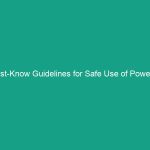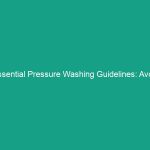Good Morning Team!
Today, we’re going to talk about an important topic that affects all of us in our daily work lives: essential strategies to manage pressure to get work done safely. In our fast-paced work Environment, we often feel the pressure to meet deadlines, complete tasks quickly, and maintain productivity. While these expectations are part of our jobs, it’s crucial to prioritize our health and Safety while we work.
Understanding Essential Strategies to Manage Pressure
The phrase essential strategies to manage pressure to get work done safely refers to the methods and practices we can adopt to handle work-related stress while ensuring that Safety protocols are followed. Understanding how to manage pressure effectively is vital not just for our productivity, but also for our overall well-being and safety at work.
Many employees believe that working faster or pushing through stress is the best way to meet demands. However, this can lead to mistakes, accidents, and long-term health issues. It’s important to remember that managing pressure doesn’t mean compromising safety; rather, it means finding a balance between completing tasks and maintaining a safe working environment.
Key Hazards, Risks, and Safety Considerations
When we feel pressure to complete our work, several Hazards and risks can arise:
- Increased Errors: Rushing to finish tasks can lead to mistakes that compromise safety.
- Physical Strain: Working too quickly can result in poor posture or repetitive strain injuries.
- Mental Fatigue: Constant pressure can lead to burnout, decreasing overall productivity and safety awareness.
- Inattention to Safety Protocols: Under pressure, employees may skip necessary safety checks or overlook equipment malfunctions.
Real-world consequences of ignoring safety while under pressure can be severe, including workplace injuries, accidents, and even fatalities. It is crucial that we recognize these risks and take proactive measures to mitigate them.
Best Practices, Procedures, & Actionable Advice
Here are some effective strategies to manage pressure while ensuring safety at work:
1. Prioritize Your Tasks
Identify which tasks are most critical and tackle them first. Use a to-do list or a project management tool to keep track of what needs to be done. This helps reduce feelings of being overwhelmed.
2. Take Regular Breaks
Giving yourself short breaks helps clear your mind and reduce stress levels. Stepping away from your work for a few minutes can enhance focus and productivity when you return.
3. Communicate Openly
If you’re feeling overwhelmed, talk to your supervisor or team members. They can help redistribute the workload or offer support. Open communication is key to managing pressure effectively.
4. Practice Mindfulness
Techniques such as deep breathing, meditation, or simple stretching can help alleviate stress. Taking a moment to breathe deeply can lower anxiety and improve concentration.
5. Stay Organized
Keep your workspace tidy and organized. A clutter-free environment can reduce distractions and help you focus on the task at hand.
6. Follow Safety Protocols
Never compromise on safety protocols, even when under pressure. Always wear your Personal Protective Equipment (PPE) and follow established Safety Guidelines.
7. Learn from Incidents
Review past incidents in your workplace to understand what went wrong and how pressure contributed to those situations. Learning from these experiences can help improve safety practices and prevent future occurrences.
Regulations, Standards, and Compliance
Understanding and adhering to safety Regulations is critical in managing pressure effectively. Familiarize yourself with OSHA regulations, ISO Standards, and any company-specific safety protocols. Compliance is not just about following the rules; it’s about creating a culture of safety where everyone feels responsible for their own well-being and that of their colleagues.
Employee Engagement & Discussion
Let’s open up the floor for discussion. Think about the following questions:
- What safety challenges have you encountered related to pressure at work?
- How do you manage stress when faced with tight deadlines?
- What strategies do you find most effective in maintaining safety while working under pressure?
Conclusion & Key Takeaways
In conclusion, managing pressure to get work done safely is crucial for maintaining a safe and productive workplace. By prioritizing tasks, taking breaks, communicating openly, and adhering to safety practices, we can handle pressure effectively without compromising safety.
Always remember, safety should never be compromised for the sake of productivity. Thank you for your attention and commitment to making our workplace safer. Let’s continue to support each other in prioritizing health and safety.


